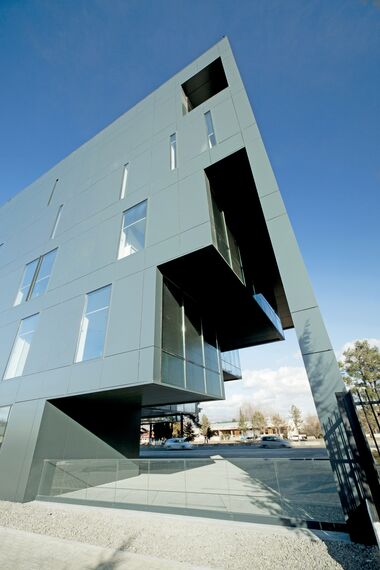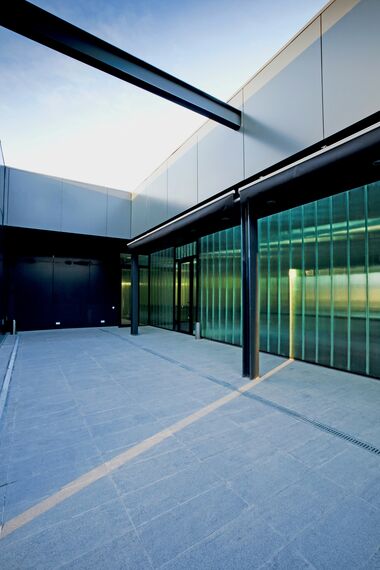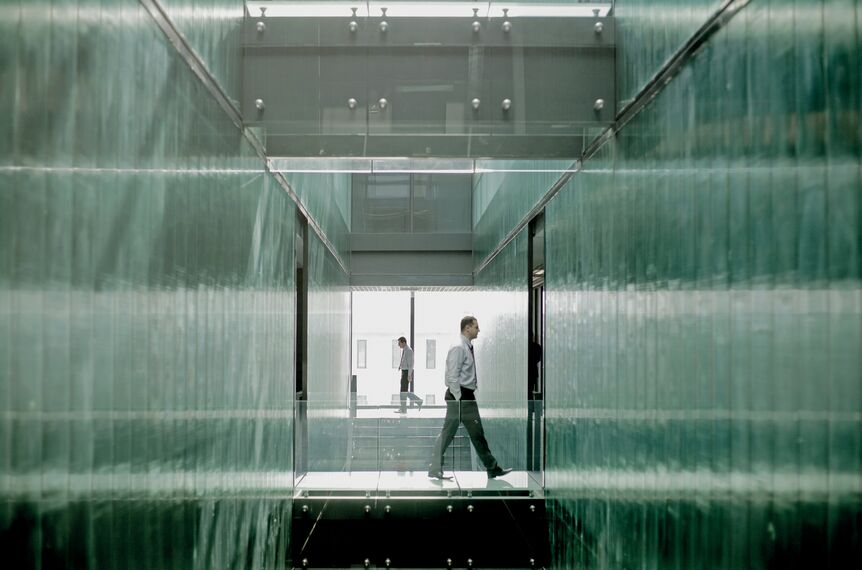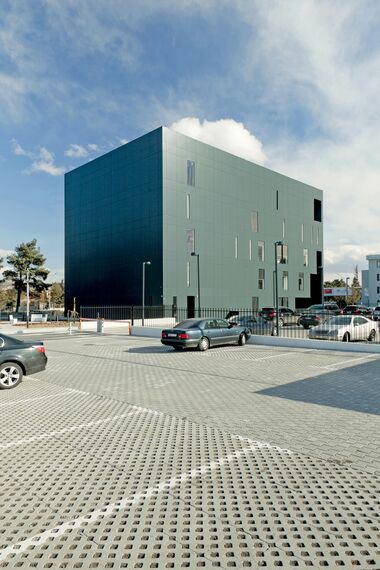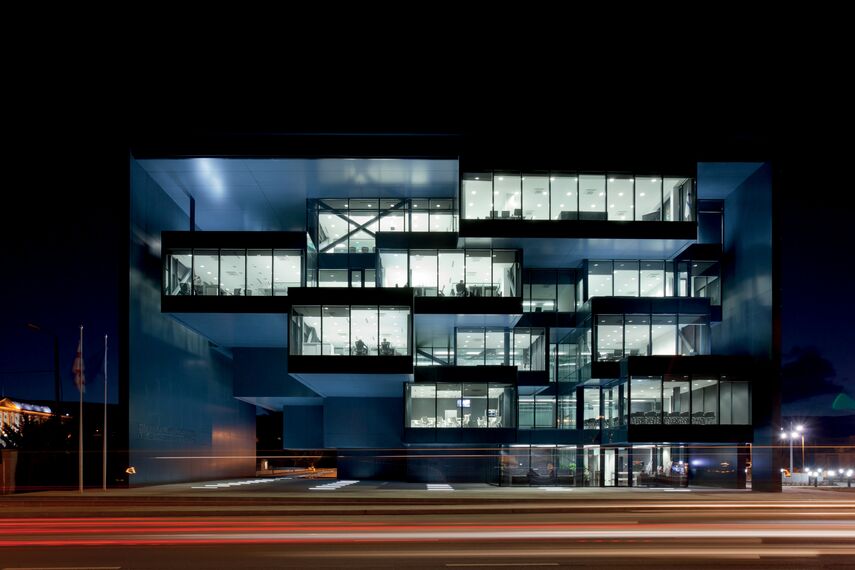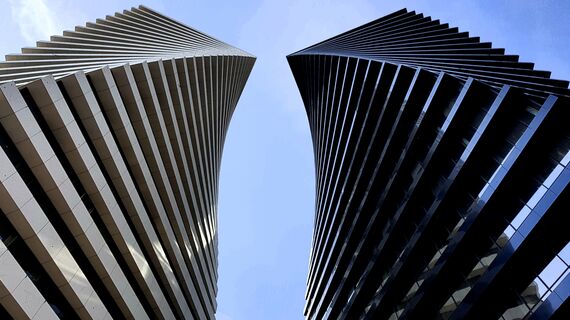- Architects of Invention
- Ivane Ksnelashvili
- Dato Canava
- Viliana Guliashvili
- Devi Kituashvili
- Elisso Sulakauri
- Soso Eliava
- Eka Kankava
- Nika Maisuradze
- Gogiko Sakvarelidze
- Eka Rekhviashvili
- David Dolidze
- Niko Japaridze
Prosecutor’s Office Tbilisi
The Prosecutor’s Office in the Georgian capital of Tbilisi, designed by the Georgian/British bureau Architects of Invention, is just one of the many striking architectural projects which have been completed in the past few years in this young country on the border between Europe and Asia.
Georgia is seeing the country’s biggest construction boom in centuries. A completely new architectural program – plus a governmental mission – has been launched by its president Mikheil Saakashvili. It’s a way to give a boost to the tourism industry – such as the spectacular border checkpoint and airport in Mestia, created by the German star architect Jürgen Mayer H., to name one example. But it’s also a way to create a new image of a modern, self-conscious country. New infrastructural and cultural buildings are being constructed and also a number of new Houses of Justice have been built recently or are under construction, such as those in Mestia (also by Jürgen Mayer H.), Ozurgeti, and Lasika (both by Architects of Invention). Fuksas has designed a huge House of Justice in Tbilisi and UNstudio has designed the new International Airport in Kutaisi.
The Prosecutor’s Office is another remarkable project at the north-western edge of the city centre, close to the Tbilisi court building, in surroundings that are primarily industrial. The plot is situated on the edge of David the Builder King Alley and has a parking area behind it. ‘This is not the site to design a contextual building – it could be placed anywhere,’ says architect Niko Japaridze, who used to be a senior architect at OMA, Rem Koolhaas’ bureau. ‘The client asked to design a building which will strengthen the quality of the surrounding architecture and will act as a landmark at the entrance of the city.’ The front of the building is certainly an eye-catcher, having been designed as a severe black frame within which an ensemble of glass volumes appears to float. ‘The frame represents the law and the clustered “mirror” volumes inside it represent the mirror of our society and the distillation of law,’ Japaridze explains. ‘Each function is expressed in each particular box, while they are connected through the stairs in the internal street, also completely made from glass. The core of the idea for the Prosecutor’s Office is transparency. All functions are visible to each other externally and internally.’
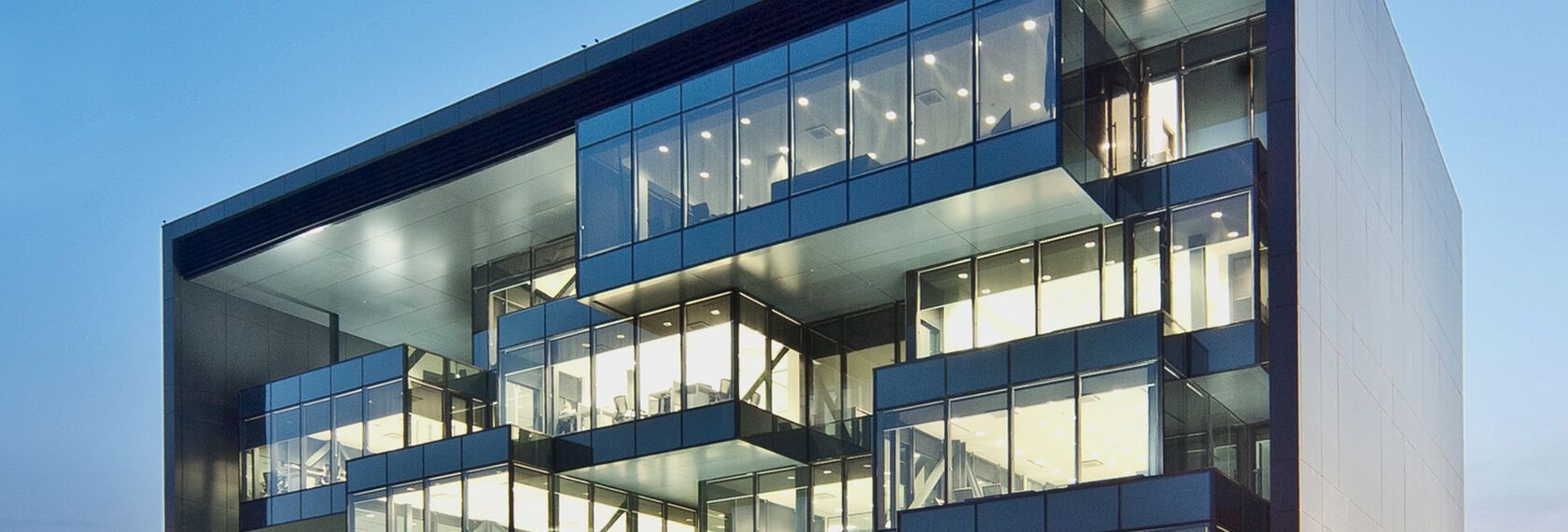
Transparency as the core idea
The transparency of the building is further emphasised by the staircase (vertical street) connecting the glass front façade with the much more closed rear façade. The entrance, security check and lobby are all on the ground floor. On the top floor are the Prosecutor’s office, a meeting room, the canteen, and a veranda for the personnel located there. The roof terrace is used for conferences and festivities.
In order to actually realise the concept of a completely transparent building, it was essential to make the right choices in terms of materials and detailing. As Japaridze explains, ‘We used the Reynaers silicon façade system CW 50-SG on the front side to have clean glass boxes without frames. The same system was used in the rear façade and side elevations, to allow for window openings and to hide frames in the aluminium panel system of these façades.’
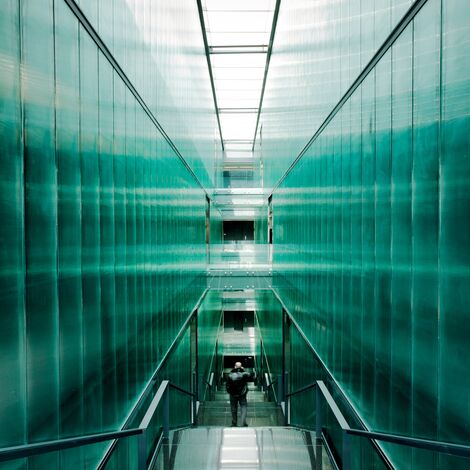
View of the internal 'street' with a large skylight above
However, the architectonic image was not the only thing that counted. ‘Energy saving was also a main issue of the project,’ says the architect, giving another reason for choosing the aluminium façade system. ‘Light is penetrating the building all the way through, and through the Reynaers façades. This gave us the possibility to achieve this transparency and make use of natural lighting. The internal stairs are covered with a large skylight with a specifically designed airflow system which allows natural flow of air.’
Another clear choice was to position the closed sides of the frame to the north and south, preventing the interior from overheating and creating micro-climates in the exterior, interior, atrium and courtyard. The architect would have liked to clad the south façade with solar panels. ‘But unfortunately the costs did not match the budget,’ he says. ‘However, there is still the possibility of replacing aluminium panels with solar ones in the future.’
Used systems
Involved stakeholders
Architect
- Architects of Invention
- Ivane Ksnelashvili
- Dato Canava
- Viliana Guliashvili
- Devi Kituashvili
- Elisso Sulakauri
- Soso Eliava
- Eka Kankava
- Nika Maisuradze
- Gogiko Sakvarelidze
- Eka Rekhviashvili
- David Dolidze
- Niko Japaridze
Fabricator
- LG Glass
Photographer
- Architects of Invention
Other stakeholder
- Ministry of Justice (Investors)
- Kirsten Hannema (Authors)

